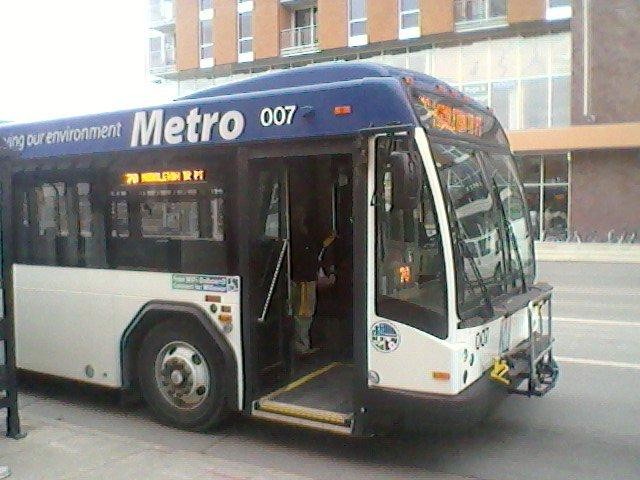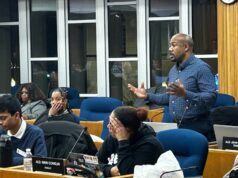From our content partner, Channel 3000.
MADISON, Wis. — In a city council meeting stretching into the early hours of Wednesday morning, Madison’s common council pushed through a massive redesign of the Metro Transit system featuring more frequent service and direct routes – but longer trips to bus stops for some.
The vote came after more than an hour of public input earlier in the night, largely opposing the immediate adoption of the plan as community members and leaders pushed for a delay so more people could be reached for input on the changes.
The adopted plan included seventeen amendments greenlit by the city’s transportation policy and planning board on Monday, transportation planner Mike Cechvala told News 3 Now on Wednesday morning. The system moves to the next step of implementation: a federally-required equity analysis, with a targeted implementation date of June 2023.
Madison Mayor Satya Rhodes-Conway released a statement Wednesday morning after the decision, calling it a “great day for people who rely on public transit in Madison.”
“The Metro Network Redesign solves decades old problems with our former network, and expressly and intentionally improves service for low-income communities and communities of color,” the mayor said in her statement. “This vote allows us to move forward to the next step, which will be a federal Title VI study to assess and approve our design.”
A city committee greenlit seventeen amendments to draft plans for Madison’s Metro Transit redesign on Monday evening, forwarding their recommendations to the full city council for what could be a final vote on the plan Tuesday night.
The amendments come as the city’s response to an outpouring of feedback, concerns, and complaints about draft plans for the redesign released earlier this year. The upcoming redesign, set for implementation in the summer of 2023, will overhaul the existing system with an emphasis on no transfer points, fewer but more direct routes, and more frequent service throughout the city.
Some residents who have fought to keep bus service in communities where the draft maps had cut routes expressed relief on Tuesday as the amendments✎ EditSign forwarded to city council for approval. Communities on Madison’s south side who relied on Route 13–cut in the draft maps–had pushed to keep service along Rusk Avenue, Bram, and Fish Hatchery where apartment complexes like Romnes Apartments depended on it.
“I’m more positive than I have been for awhile,” Capitol View neighborhood resident Dave Davis said Tuesday. He has been heavily involved in advocacy for the amendment that got passed by the city’s Transportation Policy & Planning Board Monday night; the amendment didn’t include a city staff recommendation but was adopted anyway by the board to recommend to city council.
“The transit planners listened and included that,” he said, adding the types of service advocates like himself were pushing for: “I think preserving franchise service to disenfranchised neighborhoods. Neighborhoods or facilities where there’s a large number of elderly or mobility-impaired individuals, and just making the system equitable.”
Other amendments adopted by the board includes an additional route running every 75 minutes on Madison’s north side that would directly service the Pick ‘n Save on Aberg Avenue, Wheeler Drive, and–among others–Dryden Apartments, a large housing complex serving the elderly and people with disabilities.
It was residents of the complex that had approached News 3 Now first back in March with concerns; the draft maps as they stood at the time would cut the bus stop in front of the complex and eliminate direct service to the closest affordable grocery store.
Still, concerns remain. Last week, a coalition of community groups including Dane County’s NAACP sent a letter to the transportation policy board urging them to pause the passage of the new maps until additional analysis and community outreach was completed.
“Metro’s plan for public engagement has leaned heavily on arms-length methods of outreach, flyers, and emails to local organizations and on virtual meetings,” the letter read. “This approach focused its reach on communities that were already enfranchised and it disadvantaged those that were not.”
City planners expressed optimism that the full city council would approve the redesign with the amendments as approved by the board on Tuesday night, finally moving the project to the next step.
“We think that we have answered a lot of the questions that are out there, so we expect some of the same conversation tonight but I think we’re optimistic that things will pass,” city transportation planner Mike Cechvala told News 3 Now on Tuesday.
“This project has been going on for almost two years. Early on, we started talking through very high-level goals of what we wanted to do with the transit system. And so we’re now getting into the very specific details of where the routes go and how often they run.”
In the process of addressing the bulk of complaints about the draft plans, Cechvala said the route change amendments racked up an additional $2 million beyond the budget the redesign operated on. To cut those costs to just an extra $1 million, other cost-reducing amendments approved by the board will cut bus rapid transit service frequency on weekday evenings, as well as cut BRT buses from running every 15 minutes to every 30 minutes on the weekends. BRT service–faster, more efficient buses operating along core routes in the transit system–is anticipated to arrive about a year after the redesign is implemented.
A core concern for some advocates has been the absence so far of a federally-required equity analysis of the routes, a Title IV analysis required by the federal government for any project using federal transportation funds.
“That’s specifically looking at making sure the changes that we’re making aren’t adversely affecting low-income people and people of color,” Cechvala said. “That’s not to say that nobody is going to have an adverse impact, but it’s to say: overall, we’re not shifting services from low-income neighborhoods to high-income neighborhoods, [or] from neighborhoods that have people of color to white neighborhoods.”
Planners pointed out in the Monday board meeting that other analysis has been done already to measure how low-income communities and communities of color will be impacted. The federal analysis can only be done once a route is finalized, Cechvala pointed out.
“It’s not really a great planning tool, it’s a checking tool; so we can’t really do it till we know what plan we’re doing. So it’s kinda a chicken and the egg situation,” he explained Tuesday. “We also can’t apply the Title IV analysis to a plan with many alternatives; we need to figure out what we need to do.”
Some advocates have called for a six-week delay for additional analysis, a measure that failed a vote at the board meeting Monday evening. That delay would push implementation from June 2023 to August 2023, Cechvala said, which would introduce the system during one of its busiest times–the return of college students to campus.


































